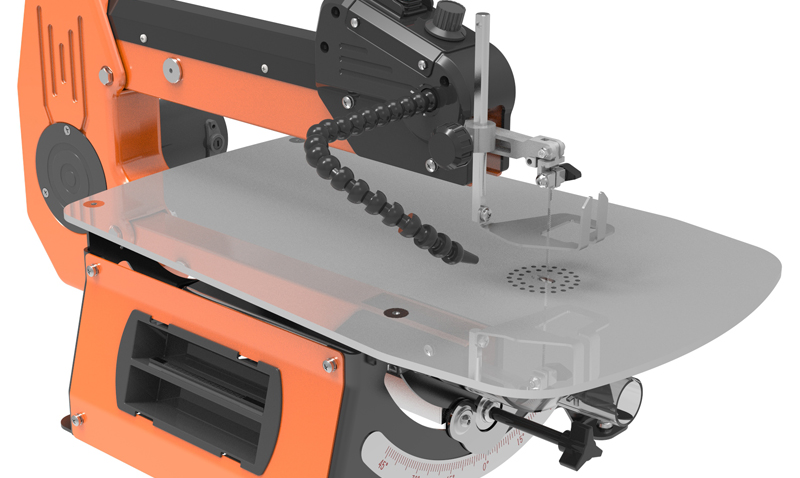
Scroll Saw Magic: Exploring Creative Applications
Introduction to the Scroll Saw
Scroll saws are versatile tools that cater to fine woodworking. They enable artisans to transform wood, metal, and other materials into detailed pieces with their refined cuts. In the intricate world of scroll sawing, precision meets creativity, allowing for delicate crafting not achievable with bulkier saws.
A Closer Look at Scroll Saw Design and Functionality
At its core, the scroll saw boasts a unique design centered around a fine, reciprocating blade. This blade is key to its ability to produce tight curves and patterns with ease. The tool’s compact size belies its power, offering a balance of control and delicacy that’s essential for scrollwork. A pivotal feature of the scroll saw is its table, which can tilt, making angled cuts straightforward and accurate. Many models also flaunt variable speed settings, providing the user with the adaptability needed for various materials and complexity levels.
Key Advantages of Using Scroll Saws
Scroll saws stand out thanks to their ability to make precise and complex cuts. They offer several key benefits that make them indispensable for fine woodworking and intricate designs. If you’re considering taking on projects that require detailed work, a scroll saw could be your go-to tool. Let’s delve into the unique advantages that these saws bring to the table.
Unique Features that Enhance Precision and Control
Many woodworkers favor scroll saws for their precision and control. These saws have several distinctive features that facilitate intricate cutting:
- Removable Blade: Unlike band saws, you can remove a scroll saw’s blade to create internal cutouts without an entry slot.
- Variable Speed: The saw’s speed can be adjusted, giving you control to match the cut’s complexity and the material’s sensitivity.
- Dust Blower: This feature keeps the cutting line free of debris for better visibility and precision.
- Tilting Table: This allows for easy angled cuts, expanding your design possibilities.
Each of these features contributes to the excellence of scroll saws in delivering clean, intricate work that is often unachievable with other saws.
Exploring the Different Types of Scroll Saws
When selecting a scroll saw, understanding the different types available is crucial. These saws vary in size, features, and price. Most notably, the throat depth of a scroll saw is a key factor in determining its cutting capabilities. The throat depth is the distance from the blade to the rear frame, dictating how large of a workpiece you can cut. Here is a brief overview of some common types of scroll saws:
- Entry-Level Scroll Saws: Great for beginners, these saws have smaller throat depths around 12 to 16 inches and are more affordable.
- Mid-Range Scroll Saws: Offering a balance between features and price, these typically have throat depths from 16 to 20 inches.
- High-End Scroll Saws: Designed for serious woodworkers, they have larger throat depths over 20 inches, feature reduced vibration, better accuracy, and higher price tags.
How Throat Depth Influences Scroll Saw Capabilities
Throat depth is integral to the versatility of a scroll saw. It determines the maximum width of the material that can be cut. A larger throat allows for more significant pieces of wood or materials to be maneuvered and cut. For instance:
- Small Throats: Best suited for jewelry or small ornament crafting, as they work well with thinner and smaller materials.
- Large Throats: Ideal for bigger projects like furniture inlays, where larger pieces of wood are commonly used.
By understanding throat depth and selecting the appropriate scroll saw, you enhance your ability to tackle various projects with confidence and precision. Make sure you consider this aspect when choosing the right scroll saw for your creative endeavors.

Creative Uses for Scroll Saws in Woodworking
The art of transforming wood into elaborate designs is where scroll saws truly shine. This section explores some of the most inspiring uses for scroll saws in the realm of woodworking, presenting a wealth of opportunities for creativity and expression.
Techniques for Cutting Intricate Patterns and Joints
Scroll saws, excelling in precision, make cutting complex patterns a breeze. Here’s how you can use them to your advantage:
- Pattern Transfer: To start, transfer your design onto the wood using carbon paper or a printout. This serves as a guiding outline for your sawing.
- Drill Starting Holes: For interior cutouts, drill holes in the waste areas of your design. The scroll saw blade can then be threaded through to begin cutting from inside out.
- Steady Hands, Steady Cuts: Maintaining a steady hand is crucial. Gently guide the wood through the blade, following your design closely for the best results.
- Complex Joints: With practice, scroll saws can be used to cut dovetail and other intricate joints, enhancing the beauty and durability of your woodwork.
Key to success with a scroll saw is patience and a steady pace. Let the saw do the work and avoid forcing the wood, as detailed work demands a gentle touch. These cutting methods open up a new frontier for creating everything from lace-like decorations to sturdy, handsome joinery.
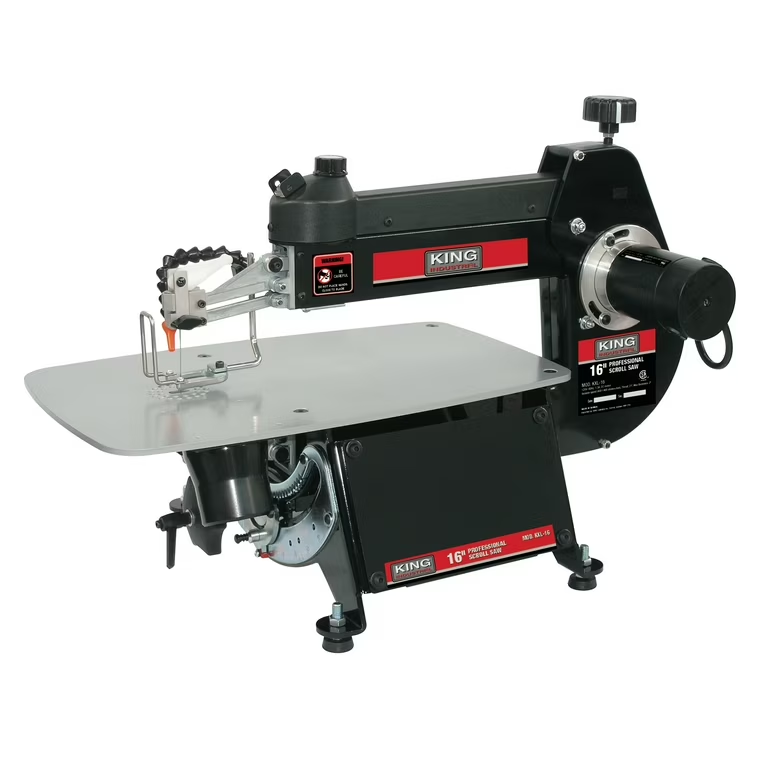
Selecting the Right Scroll Saw Blades for Your Project
Choosing the correct scroll saw blade is crucial for your project’s success. Blade choice affects cutting speed, precision, and quality. It can mean the difference between a clean cut and one that requires extensive sanding or, worse, a ruined piece. Let’s explore the types of blades and their impact on cutting.
Understanding Blade Types and Their Effects on Cutting
Scroll saw blades come in various types for different materials and cuts. Here’s a quick rundown:
- Skip Tooth Blades: These have a tooth followed by a gap. They’re good for uncomplicated, general wood cutting.
- Double Skip Tooth Blades: With two teeth and a gap, these blades cut slower but provide a smooth finish.
- Crown or Two-Way Blades: Teeth face up and down on these, cutting in both directions. They leave a cleaner edge.
- Spiral Blades: They cut in all directions with teeth around the blade. Great for 360-degree cutting without turning the workpiece.
- Metal Cutting Blades: Made with hardened steel, they’re for cutting non-wood materials.
- Diamond Blades: These cut glass, with diamond fragments on the wire.
- Pin End Blades: For older or entry-level saws, these are thicker and easier to install.
Each blade type influences how the material yields to the cut. For instance, when working with thick wood, a skilled scroll saw user might choose a skip tooth blade for faster cuts or a crown blade for minimal splintering. Remember, matching the blade to your project’s requirements is essential for efficient and effective cutting.
Essential Accessories and Enhancements for Scroll Saws
To maximize your scroll saw’s performance and your comfort while using it, accessorizing is key. Understanding and choosing the right add-ons can significantly improve your cutting experience.
Tools and Add-Ons to Optimize Scroll Saw Performance
Several tools and enhancements can make your scroll sawing more efficient:
- Dust Collection Systems: Keeping your work area clean is vital. Dust collectors remove debris, allowing for clearer visibility and a healthier environment.
- Foot Switches: A foot switch gives you hands-free control over the saw’s power, which is especially useful for intricate work where both hands are needed.
- Magnifying Lamps: These lamps attach to your saw, providing better illumination and magnification for detailed work.
- Blade Holders and Tube: For quickly changing blades, blade holders streamline the process. A blade storage tube keeps them organized and protected.
- Stand or Workbench: A sturdy stand or workbench dedicated to your scroll saw can reduce vibration and provide a comfortable working height.
Incorporating these accessories into your scroll saw setup not only improves your project outcomes but also enhances your overall scroll sawing experience.

Tips for Cutting Thick Materials with Scroll Saws
Facing thick wood with a scroll saw can present challenges. To overcome these, specific techniques will enable you to manage tougher cuts with ease.
Techniques for Managing Thicker Woods and Tougher Cuts
To handle thick materials, follow these strategies:
- Choose the Right Blade: Select a blade that suits the wood’s thickness. Thicker woods often require skip tooth or reverse tooth blades for efficient cutting.
- Reduce Speed: Slow down the saw. This reduces the chance of the blade binding or burning the wood.
- Use Relief Cuts: Make relief cuts in the waste area. This lowers the tension on the blade and ease of cutting.
- Keep Blades Cool: Pause frequently to prevent blade overheating, which can cause it to break.
- Apply Blade Lubricant: Use a lubricant like beeswax to reduce friction and make cutting smoother.
- Secure the Workpiece: Use clamps if needed to hold the wood steady, reducing vibration, and increasing precision.
By applying these tips, you’ll improve your ability to manage large or thick wood projects with your scroll saw, turning potential struggles into successful cuts.
Safety Considerations When Operating a Scroll Saw
Navigating the safe use of any power tool is critical, and scroll saws are no exception. Ensuring proper safety measures can protect you from injury and enhance the quality of your work. Let’s discuss key safety tips for utilizing a scroll saw.
How to Ensure Safe and Efficient Use of Your Scroll Saw
To guarantee your well-being while scroll sawing, follow these safety guidelines:
- Wear Safety Gear: Always wear safety glasses to shield your eyes from dust and debris. It’s also wise to use hearing protection.
- Check the Blade: Before starting, make sure the blade is securely fastened and in good condition.
- Keep Fingers Away: Maintain a safe distance between your fingers and the blade. Use a push stick or holding device for smaller pieces.
- Use Proper Lighting: Ensure your workspace is well-lit to avoid mistakes that could lead to injury.
- Avoid Distractions: Stay focused. Distractions can result in accidental cuts or mistakes.
- Secure the Material: Clamp down the material you’re cutting to prevent it from moving unexpectedly.
- Keep Your Work Area Clean: A tidy space minimizes the risk of accidental slips or mishaps.
- Disconnect Power When Changing Blades: Always unplug the scroll saw before adjusting or changing blades.
- Be Mindful of Speed: Adjust the speed according to the thickness of the material. Don’t force the wood into the blade; let the tool cut at its own pace.
- Inspect for Faults: Regularly check for loose parts or signs of wear on the scroll saw, and service it as necessary.
By following these essential safety precautions, you help ensure a safe environment while achieving the best results in your scroll saw projects.




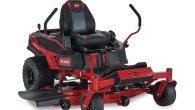


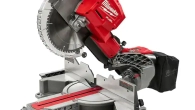
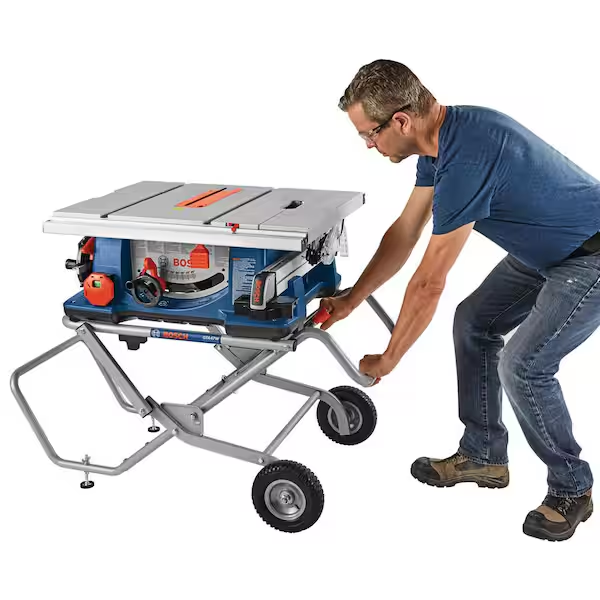

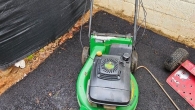
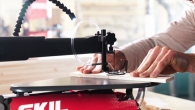
Leave a Reply